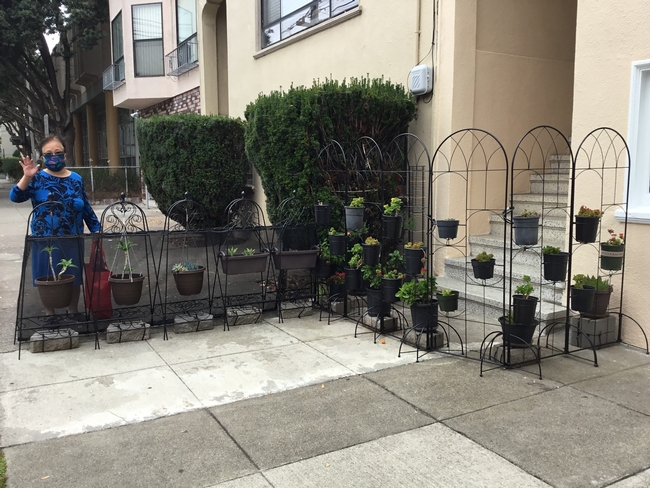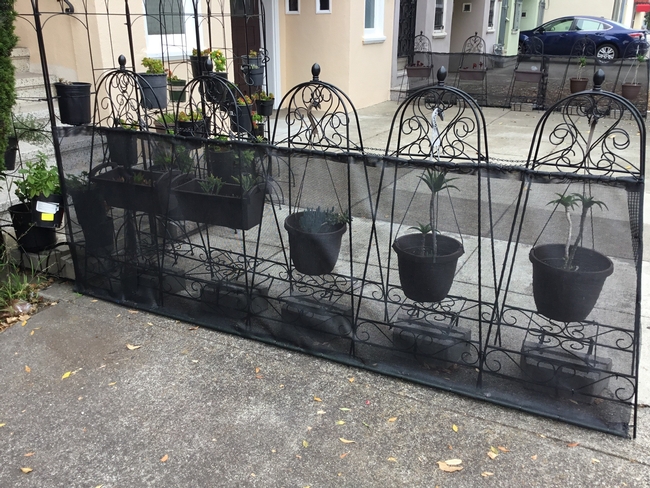UC Gardening Blogs
Dim Sum and a Garden
A few weeks ago, I heard that my mom and my brother were going on a road trip to San Francisco. Normally, I wouldn't care to go. I hated the traffic. But since the only “road trips” I've had in months had been going to the grocery store or picking-up take-out food, I wanted to go. They didn't have to ask me, I insisted on tagging along.
As I looked for my sweatshirt which I have not worn since last winter (just in case it was colder), I salivated thinking of all the dim sum I was going to get.
The traffic wasn't as bad as I remembered, and we found parking on the street where we wanted to be. I “invested” all my coins into the parking meter for a half-hour parking. (It took a lot of quarters, dimes, and nickels) and off we went.
Our first stop was the old “roast duck” place, and I bought a roast duck, roast pork, and fried rice. Then we went to Noriega St. and I bought all the shrimp dumplings, fried taro and siu mai they had, plus a few other things. I got enough to last for many days.
A ton of food wasn't the only thing I brought back home.
I also saw this cute and creative container planting idea in somebody's concrete front yard.
What a fun way to create some greenery in the concrete jungle.
I would say it was a very fun road trip and the dim sum was definitely worth the trip.
Robert Michael Pyle, Butterflies and The Dark Divide
Butterfly expert Robert "Bob" Michael Pyle, founder of the Xerces Society for...
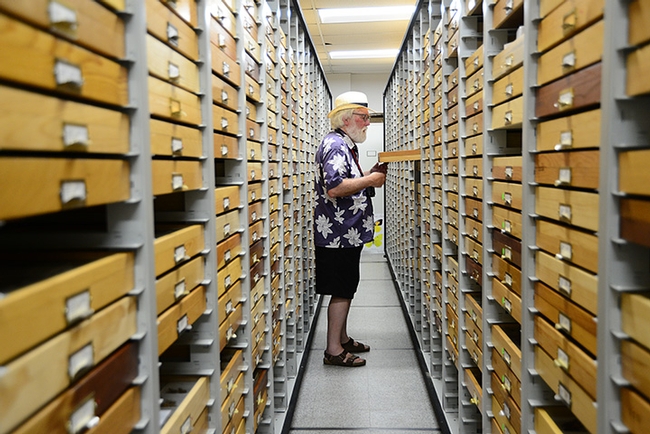
Lepidopterist Robert "Bob" Michael Pyle searches through the drawers of butterfly specimens at the Bohart Museum of Entomology. (Photo by Kathy Keatley Garvey)
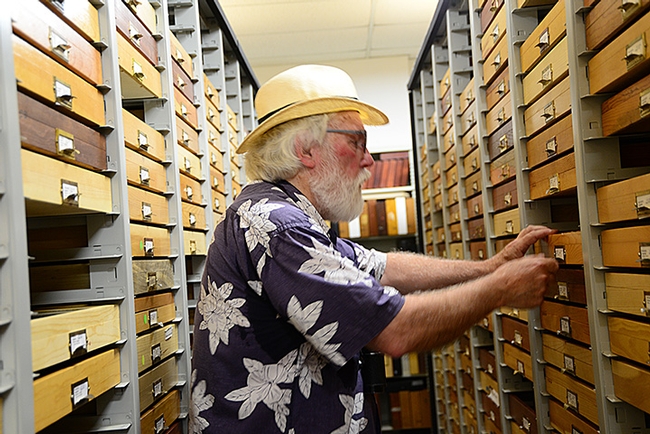
Robert Michael Pyle searches pulls out drawers of butterfly specimens at the Bohart Museum of Entomology. (Photo by Kathy Keatley Garvey)
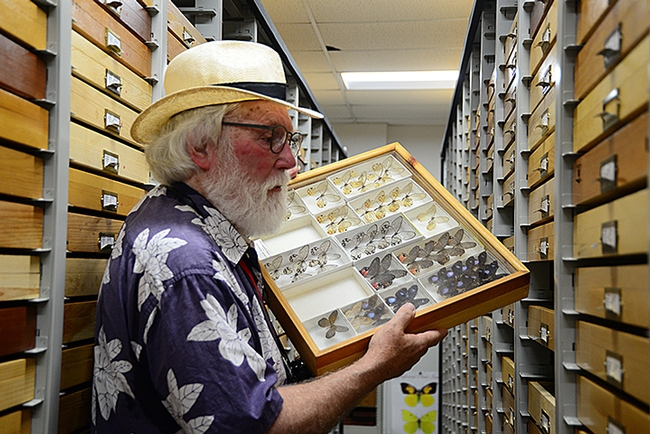
The Bohart Museum of Entomology houses nearly eight million insect specimens. Here lepidopterist Robert Michael Pyle holds one drawer and looks for others. (Photo by Kathy Keatley Garvey)
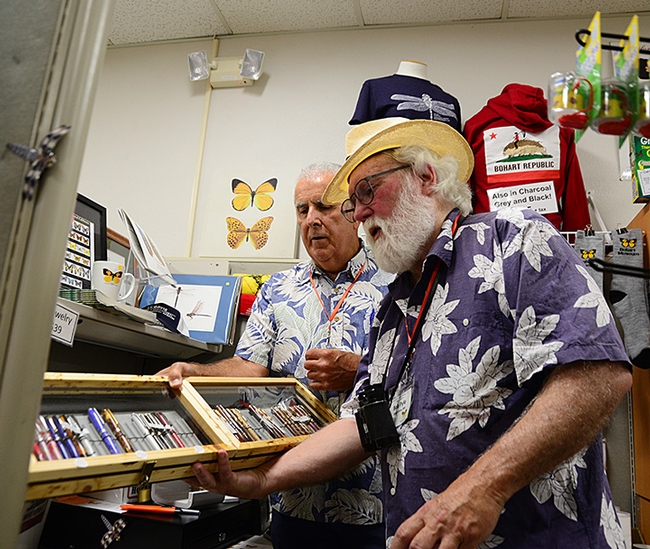
Jeff Smith (left) who curates the Bohart Museum's Lepidoptera collection, shows Robert Michael Pyle the pens he crafted from wood, available in the Bohart gift shop. (Photo by Kathy Keatley Garvey)
A Tangled Web
This has been a trying time – between COVID lockdown and the mercurial weather. I find myself having to struggle to even get into my garden regularly. A while ago I noticed spider webs, but there were only a few and I talked myself into believing that they were slow-moving and would self-limit and they weren't so bad to look at anyway. Wrong!
Then the weather threw me a curve. We woke up at 8:30 once morning to find the sky orange; the sun never seemed to have risen. My wife and I stood outside to see an orange night-time sky. Where was the day? This was very disorienting. To add to the confusion, all surfaces both inside and outside the house were covered with a patina of ash. There was something so confusing that I felt like I wanted to just look at all my plants just to find something familiar. The first thing I noticed was they were also covered with a fine patina of ash. The green foliage was ashen.
As I looked closely I also noticed spider webs. They had an eerie beauty to them and the ash covering made them stand out even more. And there were lots and lots of them. They were like mini-space ships invading the garden and landing on all the plants. How could I have neglected this for so long, I asked myself. They just stood out more with the flecks of ash all over them. After recovering from my guilt and surprise, I asked myself the question of what should I do. Insecticides seemed like overkill, and I landed on neem oil.
I went spraying all the webs until they either collapsed or really looked like space ships – covered with the white webbing and spray droplets. The immediate positive feedback I got was seeing spiders scurrying around in a panic. Right now, I am satisfied that I did the right thing. (Any other ideas about what to do?) As with the development of a corona vaccine, this experiment does not reach scientific certainty, but I should know before long if I have sent the main space critters on the way back home. More to follow.
Safely Cleaning Wildfire Ash from Yards and Gardens
The following recommendations for safely clearing ash from outdoor surfaces, including ornamental...
Why We Need to Teach Science in Elementary School
Two adults, apparently not science aficionados, recently asked me: "What is...
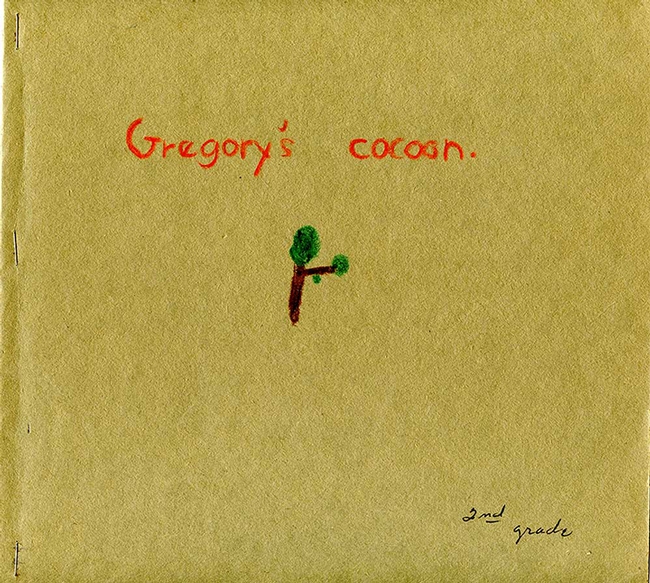
This the cover of second-grader Greg Kareofelas booklet on monarchs. He now serves as an associate at the Bohart Museum of Entomology, UC Davis, and as a tour guide for non-profit organizations.
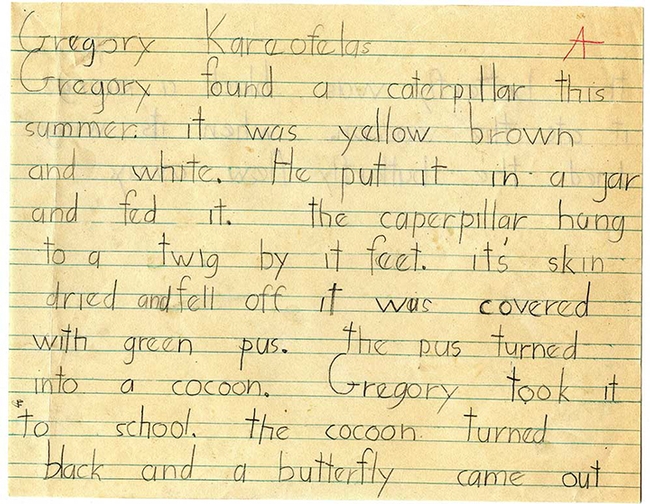
This is Page 1 of second-grader Greg Kareofelas booklet on monarchs.
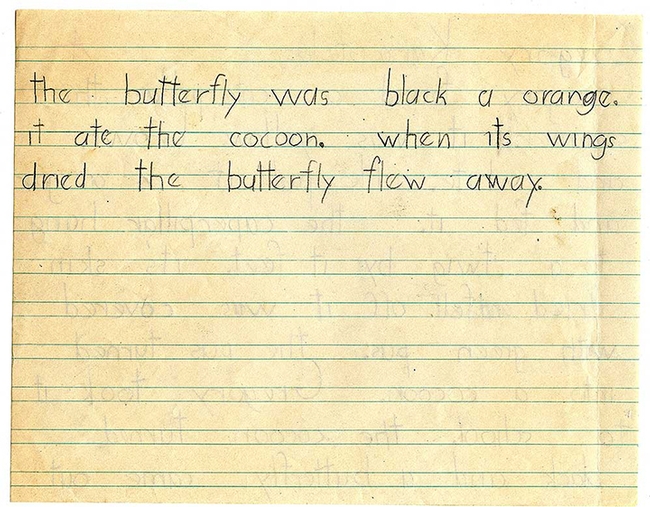
This is Page 2 of second-grader Greg Kareofelas booklet on monarchs.
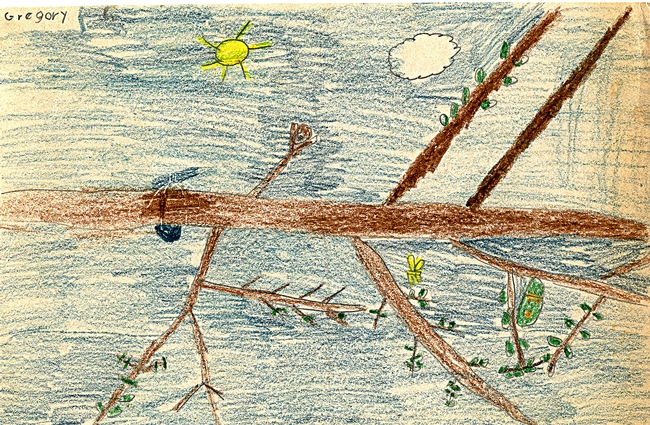
As a second-grader, Greg Kareofelas displayed a keen interest in science and acute observations about the monarch life cycle. This is his illustration in a monarch booklet.




